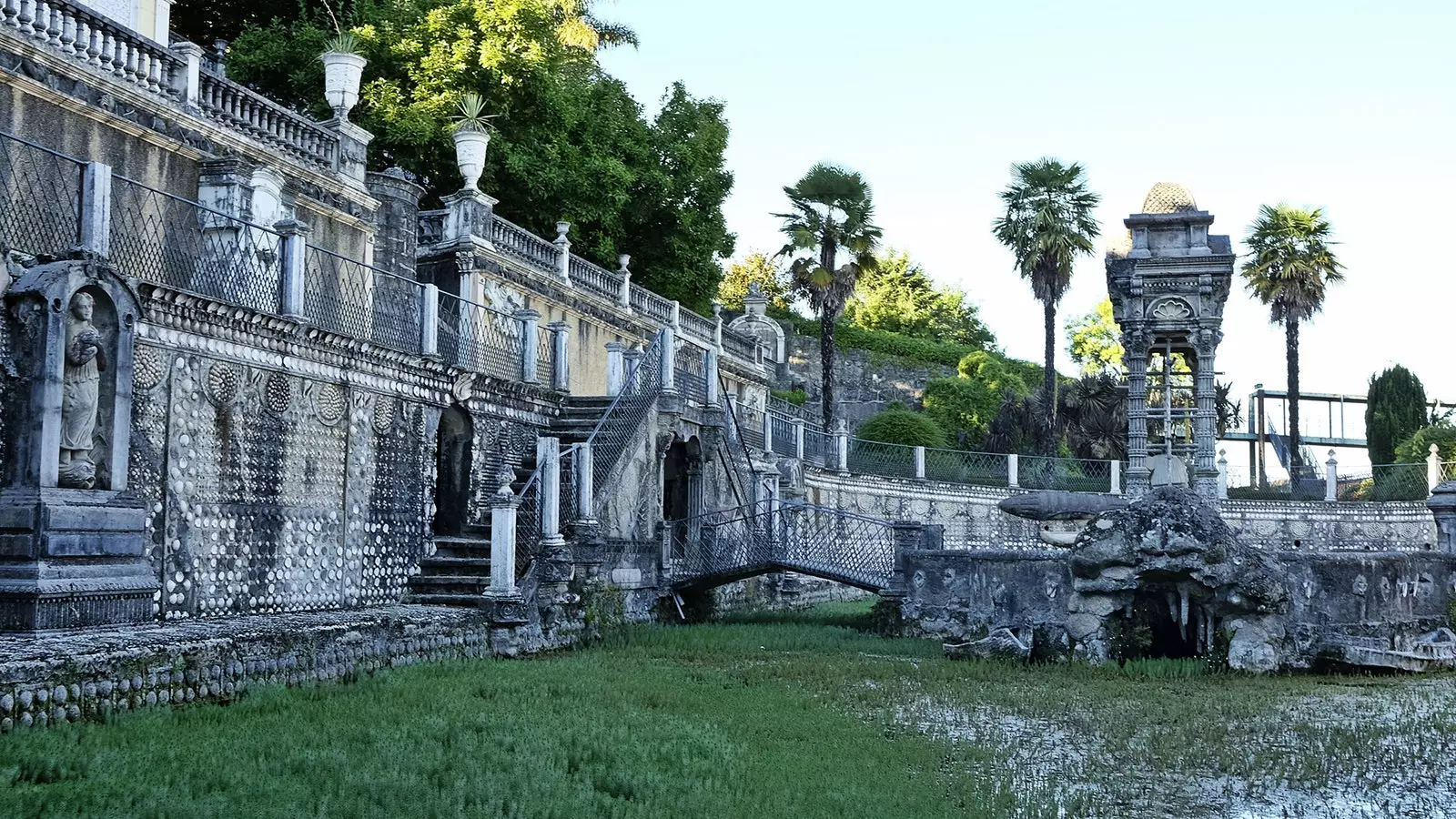
O Pasatempo de Betanzos: the garden of secrets
There was a time when the gardens they were much more than simple collections of more or less conspicuous plants. A garden could reassert the power of a king, just as those of Versailles did, represent the cosmos, as was the case with the japanese gardens , or be a representation of paradise on earth, like the islamic palace gardens.
The gardens could enclose encrypted messages , teach us something, maybe tell us a story. But at some point, not so long ago, we forgot how to read them.
We even forget that could be read and we began to see these areas as simple pleasant places full of decorative elements, places where crowd sculptures, fountains or ponds without us really understanding why they are there.
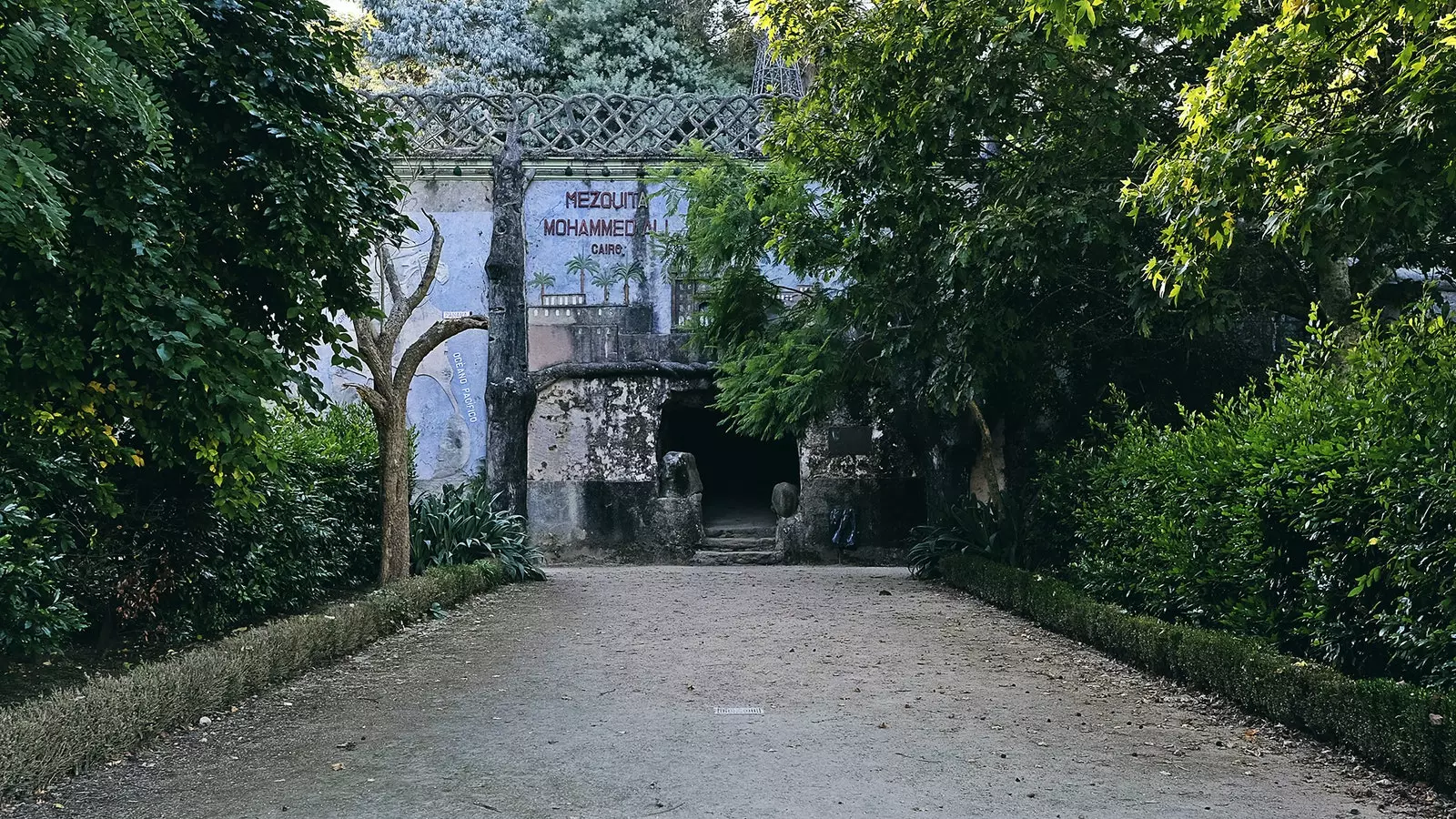
Mosque of Parque do Pasatempo
This is the case of O Pasatempo, in Betanzos, one of the most spectacular symbolic gardens and less known that are preserved in Europe; an authentic abandoned jewel for more than half a century just over 20 minutes from downtown A Coruna that we can compare to gardens such as those of the Quinta da Regaleira (Portugal) or Bomarzo (Italy).
If you get there without any prior information you will meet a place halfway between the setting of a Victorian novel and a delirium in which steam-punk mixes with historical motifs with no apparent logic. It is not surprising that it is the perfect place for influencer photo sessions because, admittedly, the space It has a difficult character to replicate.
On a wall, by a pond, a woman transforms into a futuristic wheeled boat . A little further, in a artificial cave with columns that look like trees , a dinosaur lurks in a corner.
There are bare torsos, winged figures, a family dressed in 1900s fashion traveling by camel. In one corner a figure prepares a roasted in the purest style of La Pampa While, a little later, life-size diver rescues sunken treasure . A mosque appears above a cave entrance flanked by two giant trees.
It's not easy to find a meaning in all this, even though it has.
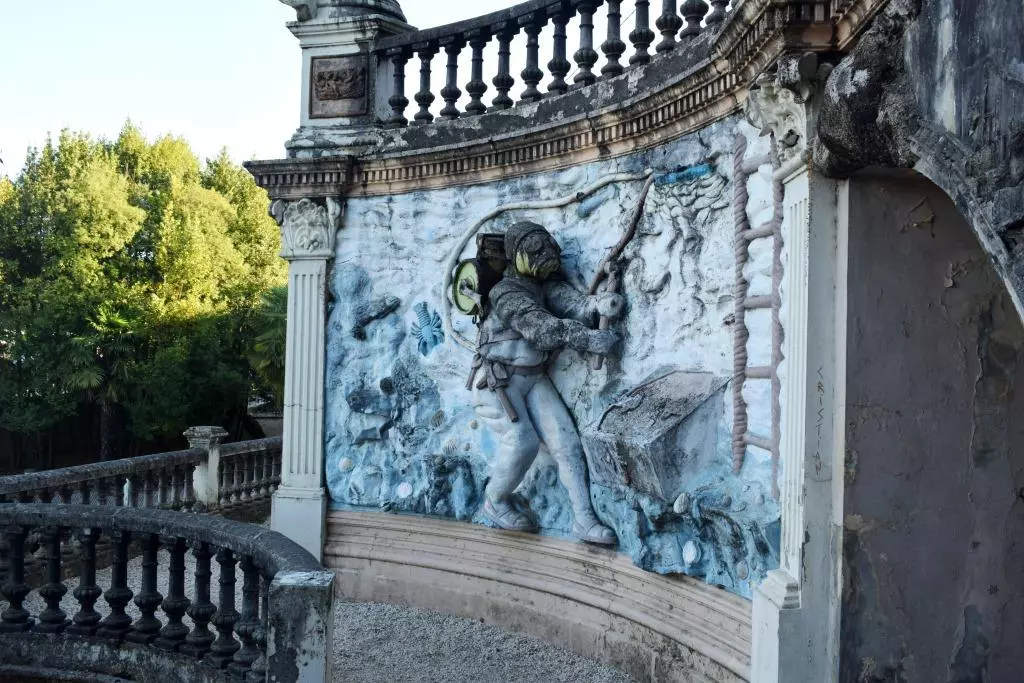
The diver in search of treasure
Angel Arcay, member of the Association of Friends of the Park, tells us that the garden "was created by Juan Garcia Naveira from 1893 . In it he tries to pour much of the knowledge that he acquired on his travels around the world , although behind there will also be a whole masonic philosophy which will be linked to the charitable works that the García Naveira brothers carried out in Betanzos ”.
The García Naveira brothers emigrated to Argentina when they were barely 20 years old, around 1870. Like so many children of humble families of the time, they saw no better option in their future than trying to make their fortune in America. That was precisely what happened.
Two decades later they returned to their hometown with a huge fortune which they dedicated in part to building schools, sanatoriums, shelters for the disabled and other facilities for the most humble sectors of the population. And also this park.
THE JOURNEY FROM DARKNESS TO LIGHT
Juan Garcia Naveira he had a great concern for the education of people with fewer resources. That is why the park is an invitation to come out of ignorance, to learn, to know the wonders of the world open even to those who could not afford to travel or train. Ultimately, what he wanted was to stimulate curiosity. And it must be recognized that 130 years later he continues to achieve it.
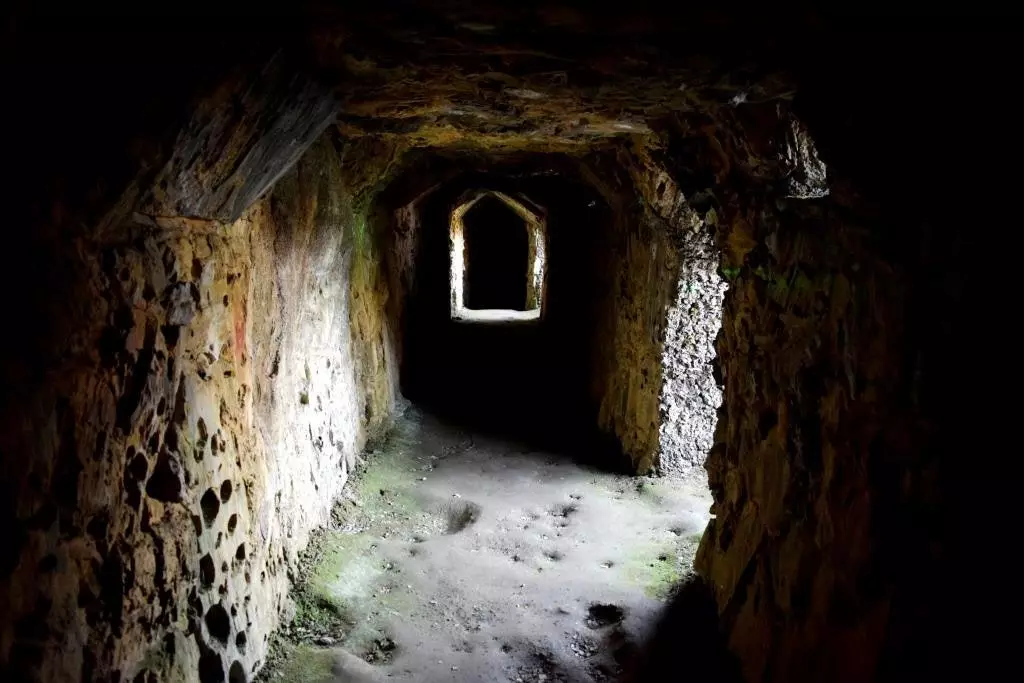
The caves of Parque do Pasatempo
The remaining part of the park, which was originally much larger, represents a journey from darkness to light through knowledge , as Ángel, who accompanies us on the visit, tells us.
The route begins at the bottom of the slope, next to a pond, through caves and galleries. One of them is accessed by jumping from stone to stone across a pond to get into a monstrous mouth; another is flanked by a giraffe and an elephant carved into the rock and, under concrete stalactites, it takes us to an underground chamber where the darkness is suddenly broken and sunlight illuminates us through a skylight in the ceiling.
Little by little we are ascending. As we discover different historical episodes and wonders of the world that cover each wall: there is a gallery of exotic animals, passages from the history of the former American colonies, temptations that hide in the caves, technological advances...
We can limit ourselves to a curious journey, to learn as we go. But in O Pasatempo there is always one more layer . Masonic icons shape the set for those who are able to discover and unravel them: roads that fork , decisions that lead us in the right direction or return us to the starting point: light and darkness, good and evil, progress or immobility. Not one of the hundreds of details that the park accumulates is there by chance.
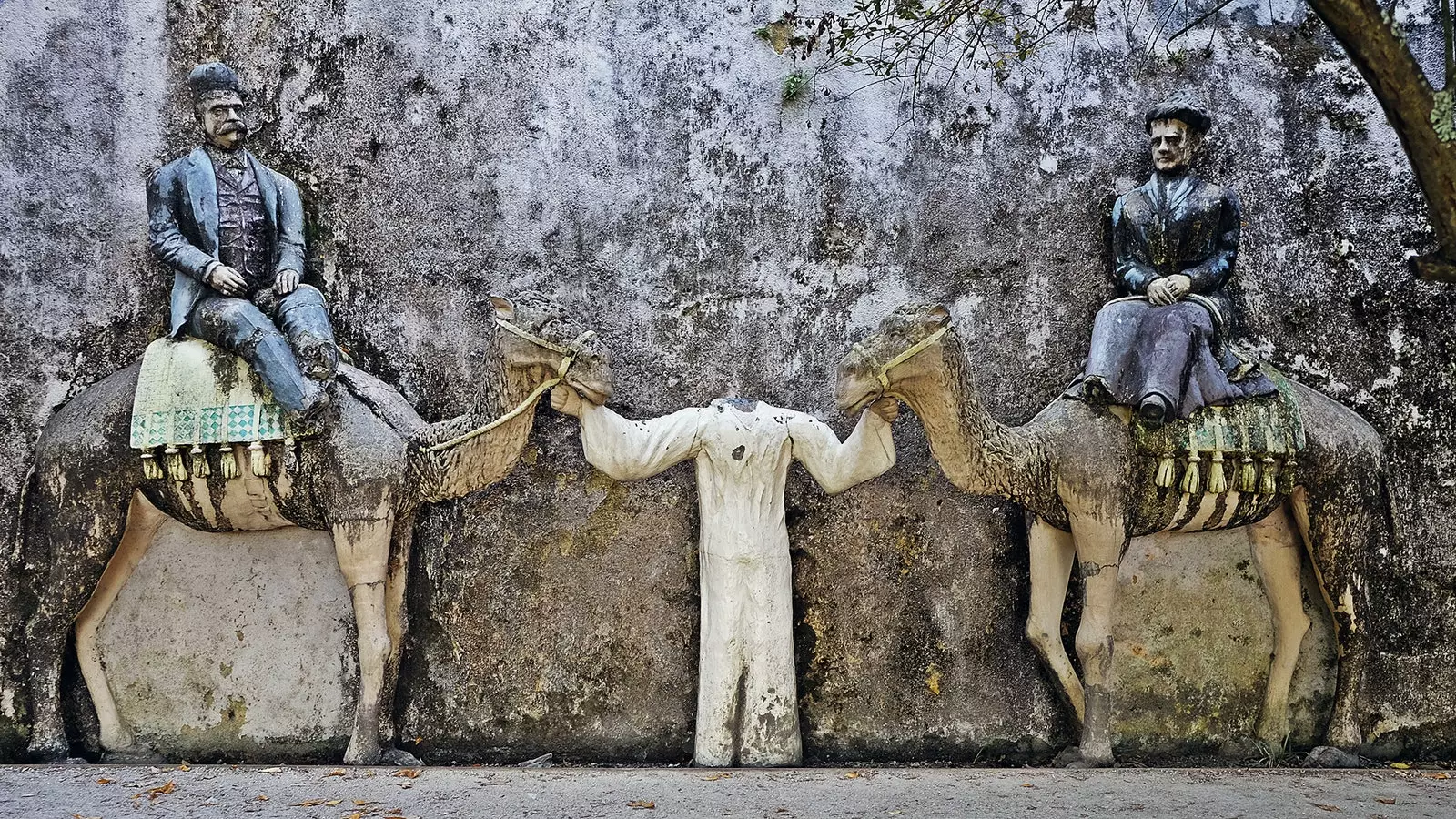
Juan García Naveira and family on their camels
Perhaps the third level, which represents the initiatory journeys, is one of the most striking today. on the back wall Juan Garcia Naveira and his family are portrayed riding camels walking next to the pyramids.
Above them flies what was surely the first image of a small plane seen in Spain (The park opened in 1904, while the first flight in something similar to an airplane, that of the Wright brothers, took place in 1903).
At one extreme, a scheme collects the family tree of capital. It is crowned by two figures embracing each other: for García Naveira money was important, but above it were the head and the heart. Nothing is casual at O Pasatempo.
The park is today a decadent jewel. There is an association that makes an effort to protect it, but it is evident that the administrations are not doing everything that would be necessary on their part. After more than a century of history, some figures are propped up and others appear obviously cracked. It is true that they give the whole an even more enigmatic aura. But one would expect that the one that is surely the most interesting symbolic garden of Spain be a little better taken care of.
Two days after our visit, a group of graffiti artists made good use of the lion that looks out over the valley.
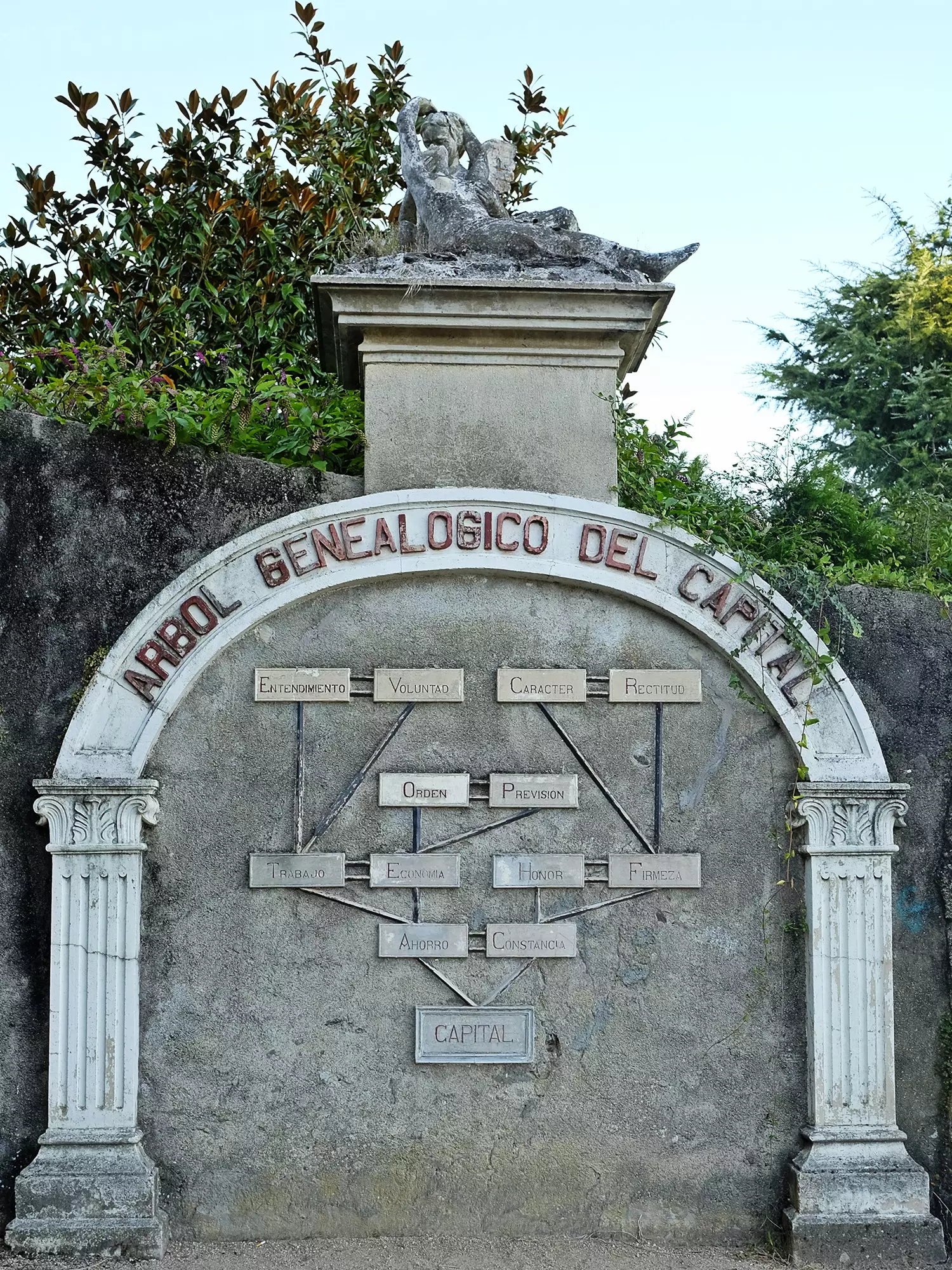
Family tree of the Naveira family
Nevertheless Xosé Ramón Novoa, another member of the Association , wants to be optimistic about it: the critical moment, the 80s, the decade in which part of the garden was demolished to build a soccer field and a sports center , has been surpassed.
We have had more than one coffee to talk about the subject and his conclusion is always the same: There is much to do, but there are more and more young people who come to the park, who get involved “because they are amazed by what they find here. Because in each visit they discover new things. And no matter how many times you come, you always find something else”. I share that optimism.
In a corner of one of the caves is preserved the inscription that a couple made more than 60 years ago . A little higher, among the trees, a group of kids record a video that will end up on YouTube.
If you dive into Instagram you will find a succession of flowing skirts, sunglasses and casual poses portrayed in front of airships, the tree of science or a grotto in which monstrous claws seem to climb a column. Why does each of the more than 40 clocks mark a different time?
O Pasatempo continues to have something that hooks. It doesn't matter if you come with historical curiosity or simply to take a couple of photos. It is a vestige of another time that, against all odds, has been able to survive to this day.
In a way, it is a voice that has been speaking to us for two centuries. And what he says continues to captivate us.
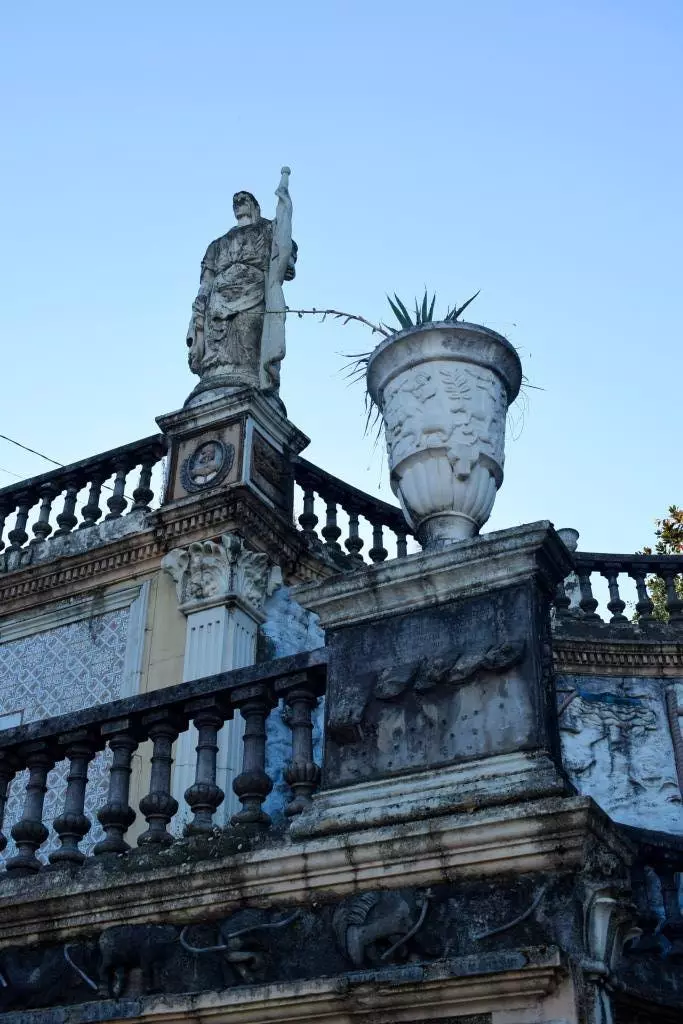
Guarding the Parque do Pasatempo
